

StarFire Crown
This is our Multilayered Monolithic 4D high translucent zirconia generally for posterior use.Amazing translucency for monolithc zirconia. When high aesthetic matching in the anterior region is not required it's a great choice as well. We will expertly select the correct strength zirconia material for the situation and deliver you a good looking crown everytime.

StarFire Crown Premium
When you need a little more aethetics the microlayered 4D zirconia StarFire Premium Crown is the answer. The best value, best looking monolithic crown on the market.
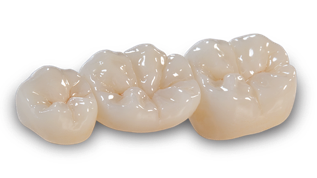
StarFire Bridge
All our zirconia monolithic bridges start with careful planning. We consider every aspect of the bridge design before making the important choice of which zirconia to use to achieve the goals of strength, function and aesthetics. During the CAD design we will often build in enhanced engineered connectors and use proprietary sintering and firing procedures so you will be assured of the strongest, best looking, value bridgework available on the market today. Try One.
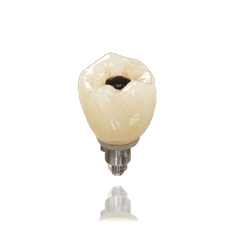
iStar Crowns and Bridges - Implants
Implant crowns and bridges made to your exact specifications and fabricated to match your favorite implant system. CAD designed for exact fitting implant crowns and bridges and in most cases can be screw retained for the convenience you insist. Talk to us about your needs and we can accommodate with the best value high precision implant restorations available posterior and anterior.
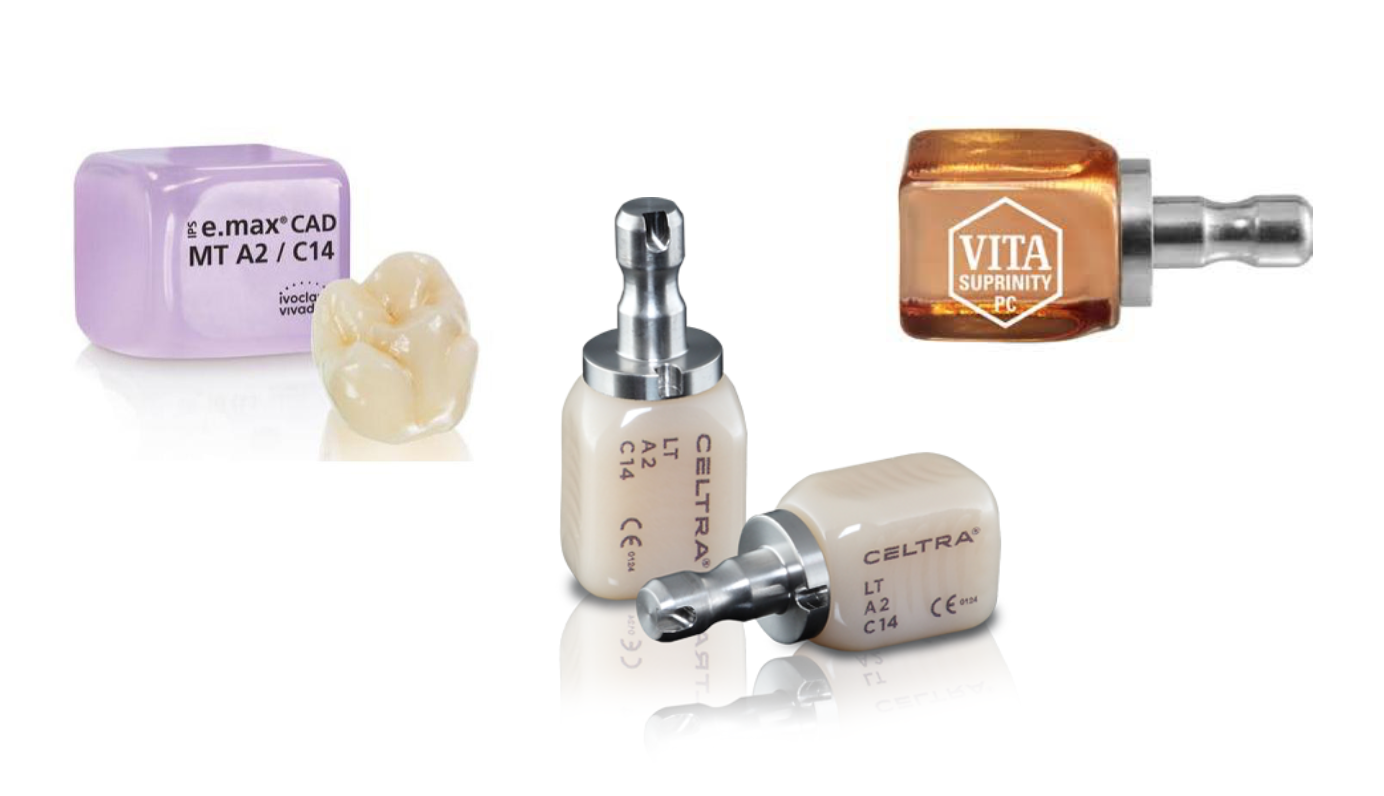
e.max and other Glass Ceramics
Glass ceramics look great, no doubt about it and in the right situation are hard to beat. We offer e.max CAD and Vita Suprinity as well as Celtra from Denstply Sirona. We only use genuine manufacturers products.
STOP PRESS ! "All Ceramic and Metal Free Restorations are the new "norm" of dentistry!"
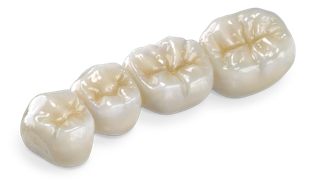
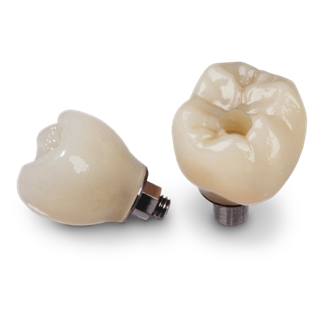
A bold statement perhaps but in the last 10 years metal free restorations have grown in popularity exponentially as the material of choice , especially with the advent of CAD CAM technology.
About Zirconia
Zirconia ( zirconium dioxide ) is an extremely strong ceramic material and well suited to dental restorations. Initially zirconia restorations were not very aesthetic and lacked the life-like properties of layered dental porcelains. However zirconia has come a long way in a short time and now the aesthetics have improved due to the advances in the chemistry of the raw materials and methods of production. Incidentally zirconia is the most studied of any ceramic material and has been used in medicine for over 30 years especially as implanted materials.
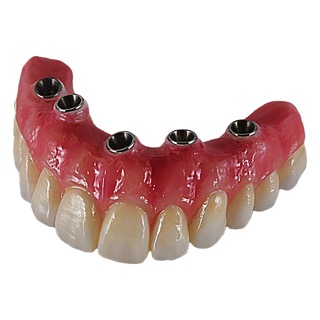
But isn't Zirconia a metal?
Zirconium is a metal. The oxide of Zirconium is not – it is zirconium dioxide and it's a ceramic, often referred to as Zirconia. Zirconium and Zirconia are distinctly different in terms of crystal structure, stability, reactivity, density, hardness, strength, toughness, etc. Every ceramic has a crystal structure containing both metallic and non-metallic atoms, but the combination is never referred to as, nor does it behave like, a metal.
Tooth enamel is primarily Hydroxyapatite which is a form of calcium apatite. Calcium is a alkaline metal so calling zirconia a metal would be similar to calling enamel a metal!
It's Radioactive?
There are a plethora of stories going around that are grossly misleading or are just incorrect about zirconia restorations and this is one of them. If you want a valid scientific answer to the question from specialist Ron Kathren CHP please read on...
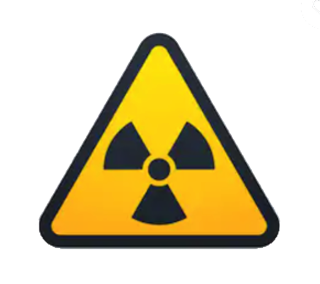
" Naturally occurring zirconium does not contain the isotope zirconium-84 (84Zr) but is a mixture of zirconium isotopes with mass numbers 90, 91, 92, 94, and 96. The 90, 91, 92, and 94 isotopes are stable (not radioactive). The 96 isotope, which accounts for 2.8% by weight of natural zirconium, is very weakly beta (but not alpha) radioactive, and its specific activity (radioactivity concentration) is so low that it can be considered negligible. Thus, the radiation dose from zirconia crowns is, for all practical purposes, essentially zero and certainly nothing to be concerned about. Zirconia-based crowns are insoluble, and if swallowed, zirconium would not be absorbed into the body. Therefore, chemical toxicity is also of no concern."
Zirconia Wears Natural Teeth More?
Wear can happen if a zirconia restoration is not glazed and polished properly but PFM crowns have been doing the same thing for decades and there has been little argument about that.
Clinical study to evaluate the wear of natural enamel antagonist to zirconia and metal ceramic crowns.
J Prosthet Dent. 2015 Sep;114(3):358-63. doi: 10.1016/j.prosdent.2015.03.001. Epub 2015 May 16.
Mundhe K , Jain V, Pruthi, G, Shah N
Conclusion:
"Zirconia crowns led to less wear of antagonist enamel than metal ceramic crowns"

Lithium Disilicate and Lithium Silicate
Both are known as "glass ceramics" and have great aesthetics and translucency but sacrifice strength, are generally not suitable for large span cases and cannot be used reliably for posterior bridges. Often known as the generic term e.max but confusingly Ivoclar IPS e.max is a complete system of all ceramic restorative materials including their e.max zirconia as well. Other materials such as Vita Suprinity and Celtra Duo from Dentsply have been available in recent years and GC LiSi is gaining ground in this market as well. Traditionally these material are pressed into a mould under heat but now can be CAD designed and machined. However, attention to detail of tooth preparation and margins is essental for successful CAD designed and manufactured glass ceramics.
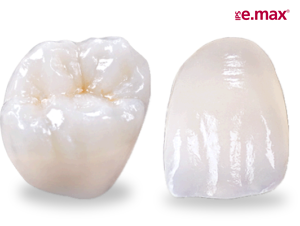
Hybrid Ceramics
Hybrid ceramics are basically ceramic and/or glass particles combined with polymers and mixed in differing proportions using a variety of different manufacturing methods to form some form of matrix. They are easy to machine and they polish very well. Hybrid Ceramics are generally only suitable for single unit restorations be it crowns inlays or veneers. The major advantage of these products is their " shock absorbing" feature. In other words they will absorb some load and flex slightly before before they reach fracture point. Most of these products have a flexural strength in the range of 150 Mpa.

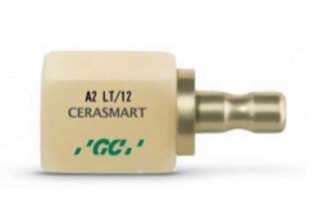
Wait! What is 4D Zirconia?
We're glad you asked, 4D Zirconia is the latest technology to achieve the best combination of strength and translucency aesthetics using a very clever layered material. In traditional zirconia you can have different shade layers (multilayer zirconia) but normally the strength of the zirconia will be consistant thought the restoration. In 4D zirconia you also have different zones of strength throughout the restoration as well. The reason is as you increase your translucency of zirconia often your flexural strength decreases this is a chemical property of current materials. This however can be used to advantage when we want nice translucent cusps and incisal edges but the bulk of the restoration ( especially in areas where it really matters ) is very strong. The evolution of Zirconia materials is ongoing but the types available today are a great balance of strength and aesthetics and are very capable of delivering great restorations.
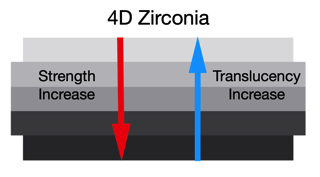
Strength of Ceramic Restorations
Please Swipe Left





Contact Us Today
We have been making CAD designed and digitally manufactured crowns and bridges for more than 10 years and now it's your turn to compare and find out the difference a StarFire All Ceramic Restoration from Fabdent can make to your dental practice .
Please do not hesitate to contact us today for any enquiry you may have.

Fabdent Products and Services © 2020
